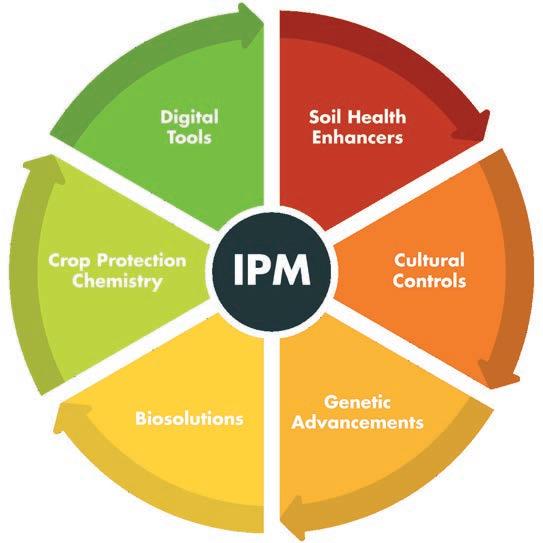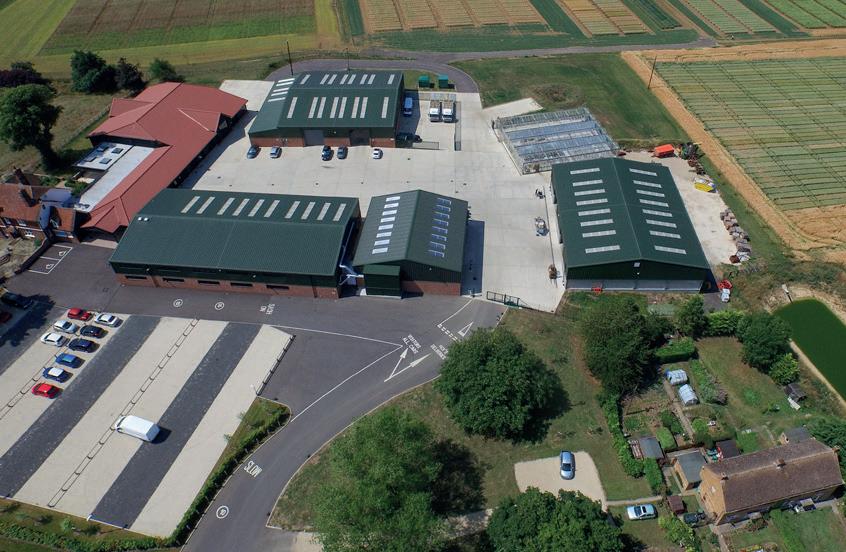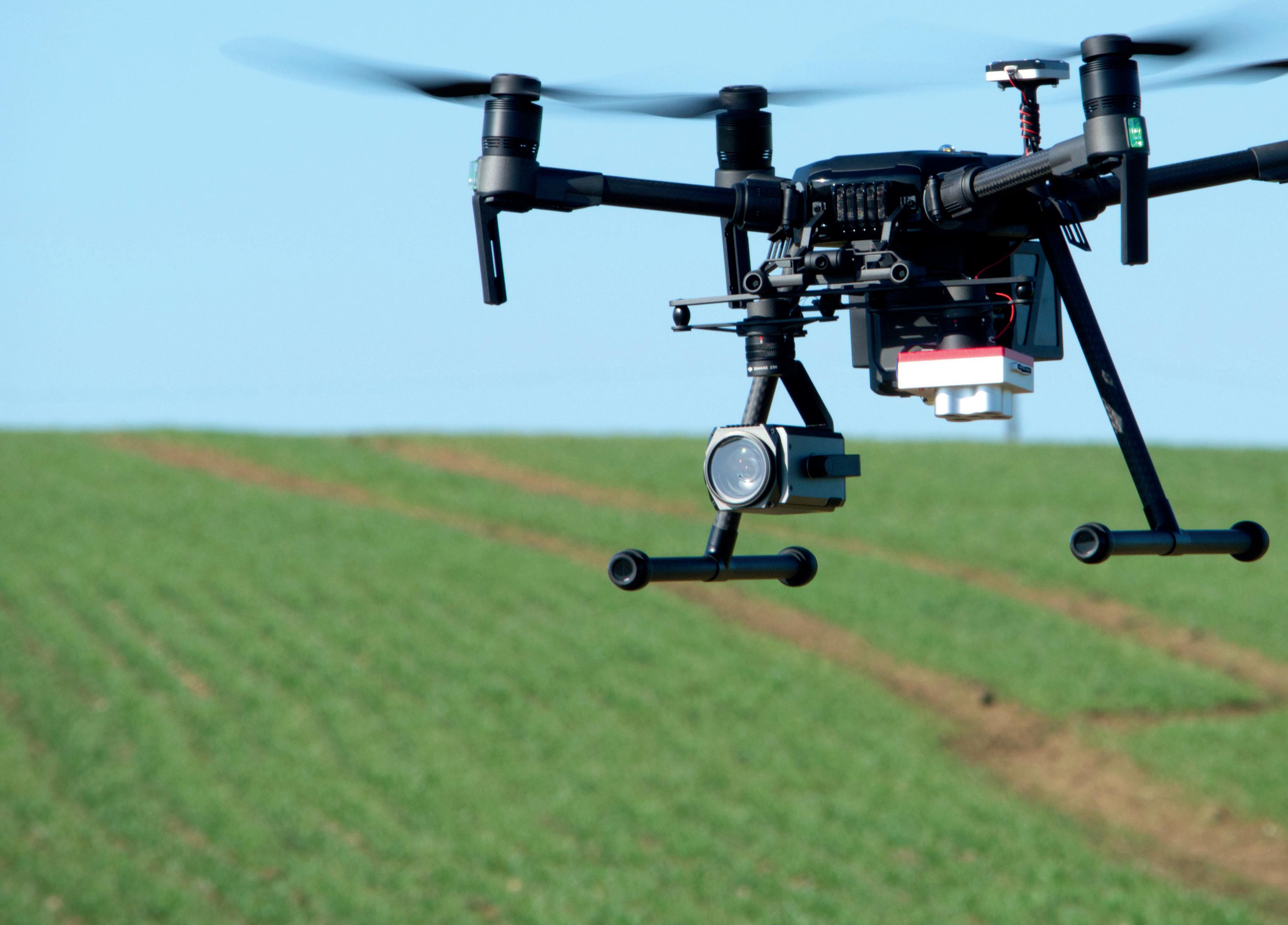
5 minute read
Growing Businesses Now and Into the Future
BY DR RUTH MANN BSC (HONS), MSC, MBA, PHD HEAD OF INTEGRATED CROP TECHNOLOGIES AT AGRII
Maintaining a successful business growing and supplying turf in the current environment and business climate is increasingly difficult due to unpredictable weather patterns, loss of traditional synthetic chemistry, and increasing commodity prices. Additionally, consumer demands for more sustainable products often result in increased production costs without the corresponding increase in selling price, squeezing gross margins. To make life even more complicated, enabling technologies, such as robots, AI and machine learning bring an unknown but huge opportunity to disruptively innovate our global farming industries. Therefore, we must continue to look at current management practices and maintenance programmes with an open mind to change and the competitive advantages those changes may bring while maximising current gross margins.
Advertisement
Origin Enterprises is an international agronomy services group with operations in Ireland and the UK, continental Europe and Latin America. The group supports growers and professionals in agriculture, amenity, landscaping, and ecology markets through the provision of specialist advice, inputs and digital solutions. Agrii, part of the Origin group, harnesses the power of skilled agronomists and the best intelligence to deliver unrivalled expertise and support for sustainable and profitable farming systems in the UK. As a leading provider of agronomy services, technology and strategic advice, Agrii combines excellence and innovation with the latest research and development to ensure our customers can meet today’s farming challenges with knowledge and confidence. Agrii extensively researches every aspect of sustainable and profitable food production through trials conducted in accordance with integrated pest management principles at their core.
Integrated pest management (IPM) is a coordinated and planned strategy for the prevention, detection and suppression of pests, weeds, and diseases. It is about taking appropriate actions using a combination of cultural, biological, or chemical measures appropriate for the situation while ensuring the resulting product is profitable. IPM aims to limit dependency on plant protection products, reducing unnecessary use whilst ensuring risks to the environment and human health are mitigated. It allows growers to demonstrate competency in considering a range of methods in which to control pests on farm. This could mean cost savings and potentially reduce pesticide resistance, safeguarding active ingredients for future use while enhancing crop yield and so gross margins.
Maximising the growth, yield and quality of any crop, be that wheat, potatoes, or turf, starts with the health of the soil underneath. Agrii focuses on methods that improve soil health to help farmers improve land quality. We examine the impacts that different rotations and cultivation methods have on soil health, and therefore crop quality. For example, Agrii has researched mycorhyzal fungi and plant growth-promoting bacteria in our trials, looking at ways to improve soil health. We noticed an increase in nitrogen uptake from the soil and found increased greening and protein in wheat plants. This research has helped us improve nutrient efficiency and soil health.
While keeping the soil as healthy as possible to support the growth of the crop, we need to ensure we prevent any possible pest, weed, or disease outbreak as much as possible. The first method to consider in the prevention of problems is crop rotation. Rotations involving different crop families help to break up pest, weed, and disease lifecycles and so reduce the carryover of inoculum in susceptible crops. Rotation should be accompanied by good hygiene principles including regular cleaning of machinery or equipment. The disposal of diseased crop debris is important to prevent harmful pathogens, weeds, or pests from spreading between fields. It is also important to be able to remove any volunteer plants during the break crop to ensure pests or diseases are not spread via volunteers harbouring inoculum.
Cultivation practices should also be considered to disturb pest, weed, and disease lifecycles. For example, rotational ploughing can be used to manage weed seed populations. Seedbed preparations can help with getting the crop established quicker to aid stronger and more resilient plants. Stale seedbeds can also force the germination of any weed seeds that have been disturbed during cultivation practices, allowing these to be removed before the crop is sown.
Now we have worked through long-term multi-season preventative measures of reducing the potential ingress of pests, weeds and diseases, we need to think about in-season control measures. These start with crop variety choice as the cornerstone of cultural control of pests and diseases.
Growing pest or disease-resistant varieties can enable a crop to grow that is more tolerant to any pest or disease damage. Alternatively, we may need a variety that has increased vigour to help smother weeds and aid establishment. Agrii has developed a variety sustainability rating to test how technically robust varieties are, which varieties offer consistent yields and quality, reduce agronomic risk and allow us to understand if they provide the flexibility to use crop protection products more efficiently and so provide growers with increased environmental and financial benefits. Additionally, buying certified seeds free from disease inoculum and weeds seeds ensures the crop has the best start.
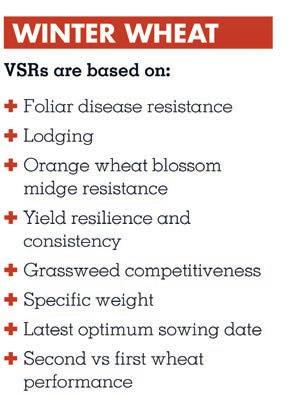
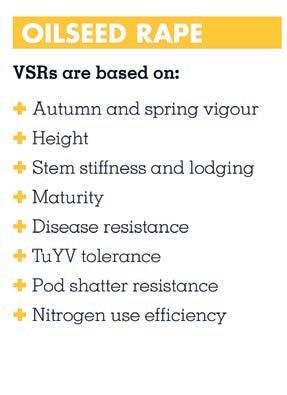
Following the variety choice, feeding the growing crop is the next important consideration. All nutrient plans should begin with a broad-spectrum soil analysis to determine the available nutrients already present. This will also determine if the pH is suitable and allow planning for long-term alterations over the rotation plan. Consider the release pattern of the fertiliser and how it fits with management practices as fewer applications of controlled-release fertiliser may be more cost-effective compared to more regular applications of readily available nutrients. Many companies are now looking at improved technology within fertilisers. For example, Agrii has developed a range of enhanced efficiency fertilisers to help us to be more environmentally conscious when applying nutrients. Agrii-Start Liqui-safe, for example, is a urease and nitrification inhibitor for liquid fertiliser which has proven yield enhancement whilst reducing environmental impact and benefitting soil biology. Leaf tissue testing throughout the growing season can also ensure any changes in nutrient availability can be remedied proactively, enhancing crop yield.
Once the crop is sown and we have the maximum yield potential in the ground, everything we now do keeps that yield or allows it to diminish over the growing season. Therefore, being vigilant and monitoring the crop regularly for pest, weed, and disease ingress is paramount. These records can then be reviewed in relation to weather to predict potential pest, weed, and disease problems. Enabling technologies, such as drones and satellite imagery can make this monitoring process easier allowing us to identify potential problem areas more quickly.
Thresholds for pests, weeds, and diseases should be set to help guide when intervention is necessary to prevent economic crop yield from being impacted. This helps to protect against the unnecessary use of Plant
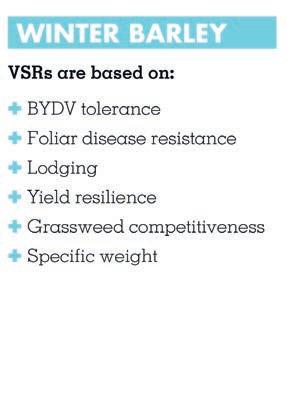
Protection Products (PPP’s). The use of online decision support systems may replace setting of thresholds in the future to determine the right time for appropriate intervention.
When proactive intervention is necessary, understanding the modes of action and longevity of any plant protection product is important to ensure optimal activity keeping all potential yield available. For example, every product is more effective at certain points in the pathogen’s lifecycle. If the product is more protectant and works optimally on spores, preventing germination and infection, there is little point applying it when disease symptoms are apparent as the spores have already germinated and mycelium is growing through the plant. In this case, a curative or eradicant product that prevents mycelial growth is required.
Biosolutions are increasingly recognised as evolving technology that can complement and, in some cases replace traditional PPPs. They can often be active at the very early stage of disease development, allowing synthetic chemistry to be used for curative and eradicant applications, where necessary.
Where PPPs are required, care should be taken to ensure maximum efficacy for the input cost including machine calibration, nozzle selection, setting correct boom height, use of surfactants to aid retention, appropriate timing of application, and during appropriate weather conditions.
Throughout the whole growing season, enabling technology is emerging in the form of digital tools to aid decisionmaking by providing actionable insights. Specifically, digital tools can support decisions on if, when, where and what to apply to achieve optimal growth and yield for each input, ensuring margin over input cost remains as favourable as possible.
Continuing to evaluate and robustly test these technologies will future-proof all IPM programmes and ensure we continue to gain competitive advantage supporting our businesses into the future through these challenging and continually changing times.
